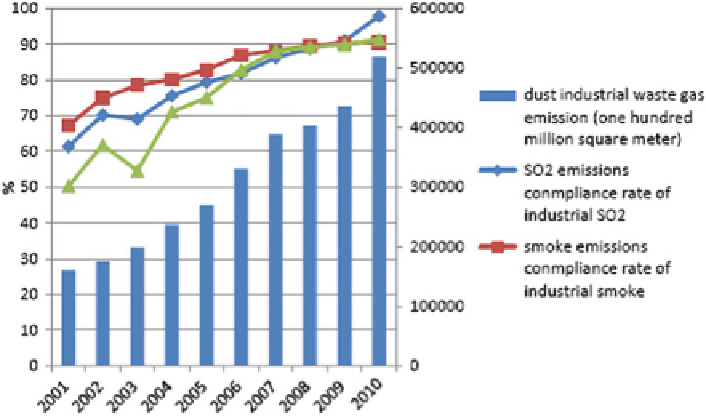Environmental Engineering Reference
In-Depth Information
Fig. 6.1
Industrial waste gas emissions and compliance rate (Source: National Bureau of
Statistics,
China Environment Statistical Yearbook 2011
)
Of them, 17 cities, or 3.6 %, achieved the primary level standard. Some 373 cities,
or 79.2 %, reached the secondary level, while 73 cities, or 15.5 %, achieved the
tertiary level. The air quality standard compliance rate of cities administered at
the local level or higher is 85.0 %, of which 85.5 % are county-level cities. The
percentage of cities administered at the local level or higher, including provincial
capitals, that achieved the national primary level for air quality was 3.3. Cities that
reached the secondary level accounted for 78.4 % of the total, while those that met
the third level accounted for 16.5 %, and cities below the third level accounted for
1.8 %. The cities in which the annual density of inhalable particles met or fell below
the secondary-level standard accounted for 85.0 %, and those below the third level
accounted for 1.2 %. The cities in which the annual density of sulfur dioxide met or
fell below the secondary-level standard accounted for 94.9 %, with no cities below
the third level. The density of nitrogen dioxide in all the cities not under direct
control of the central government met the secondary-level standard, and 86.2 % of
the cities achieved the primary level [
4
].
6.3.2 The Major Measures Taken in the Prevention of the Air
Pollution Control During the 11th Five-Year Plan
6.3.2.1 Major Laws and Policy Measures
Amendment of the Air Pollution Law
China established a law aimed at preventing air pollution in 1987 and revised the
law in 1995. A second amendment was made in 2000, and the third revision was

